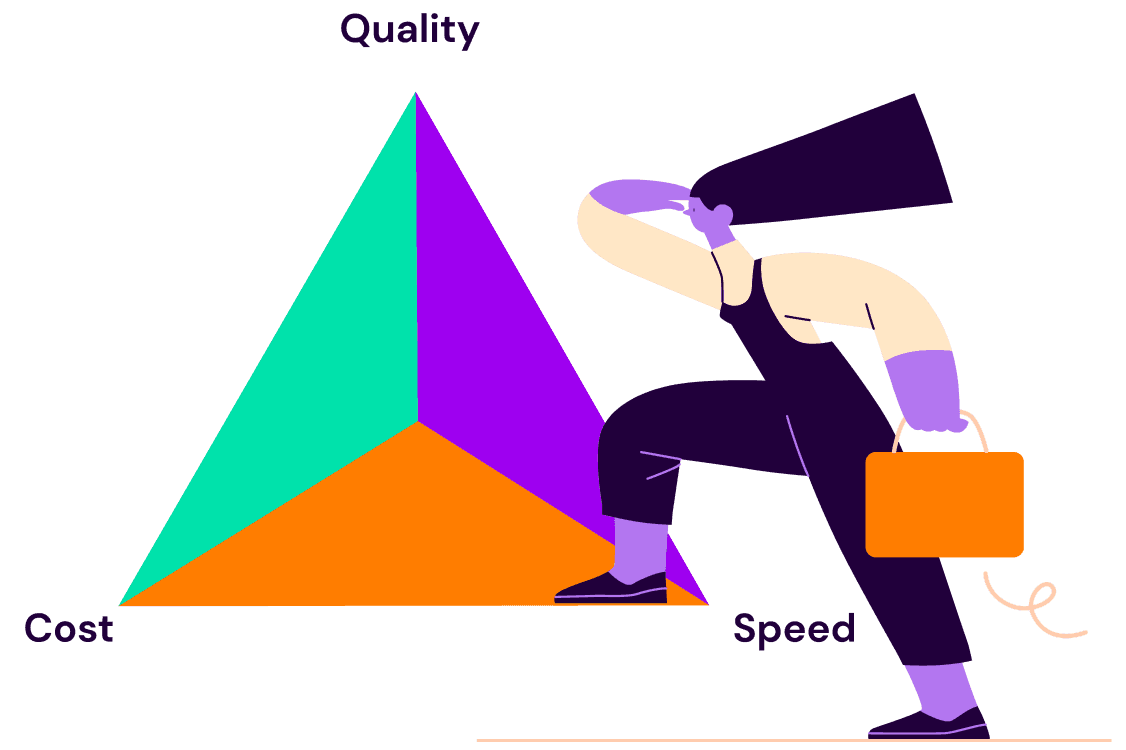
Back to blogs

How Internal Mobility Wins Employee Trust and Strengthens Your Business During Economic Uncertainty
Many businesses are reacting to the changing economy with layoffs, leaving employees and candidates scared and confused about how to progress in their careers. Fostering a culture of internal mobility keeps the business flexible and adaptable—and your people engaged. Coupling talent acquisition to internal mobility while enabling the right technology will empower employees and set your company up to emerge from the downturn stronger.
Consider the impacts of the current climate on talent
The barrage of layoff announcements continues to drown out positive job growth news as paranoia spreads. And what happens when the market rebounds? Some leaders believe they can simply “turn on the pipelines” and let the talent flow back in. But that's neither a simple nor a cost-effective solution in the long run. It can take months or even years to build back and the financial costs of attrition, backfilling, productivity losses, and ramp-up time for new hires add up quickly.
Among the many negative impacts of layoffs on the business, the most detrimental is the deleterious impact on existing and prospective talent. News of layoffs spreads across the professional community—dinging company culture, deflating employee morale, and fueling an overall distrust in management.
In an effort of self-preservation, workers are doubling down on career cushioning to prepare for a potential job loss and stay agile throughout the recession. A recent Forbes article identifies skill building, applying to other jobs, and starting a side hustle as three ways employees are actively career cushioning. When evaluating new opportunities, candidates will favor companies with an authentic commitment to upskilling, reallocation, and a human-centered talent strategy.
How can you signal a commitment to investing in your employees—and emerge even stronger and more competitive as a business?
Create a culture of internal mobility
The answer to navigating our changing economy is already within your company. Enable workers to build new skills, apply for other jobs, and work on side gigs—all within your organization. In addition to building morale among existing employees, an investment in internal mobility will attract tech talent that is open to work and frustrated by big tech’s lack of foresight and empathy around people strategy.
According to BetterUp, “Downturns are the best time to upskill and retrain your workforce. And it’s an investment with clear ROI. When companies invest in professional development, they see a 218% increase in income per employee and 24% higher profit margins than those without talent development programs.”
A better way to stay nimble and emerge from a downturn stronger is to utilize your best people to tackle the most critical challenges. This means aligning your talent strategy to your business strategy to remain flexible and adaptable—and your people stay engaged.
Right now, support for internal mobility is the best signal a company can send to its workers. For one, it helps retain top talent by giving employees opportunities to grow and develop across the business. This is especially important for Millennials and Gen Z, who make up more than 60% of today’s workforce and place a high value on professional development.
Additionally, an internal career change can help boost morale and engagement by giving employees a sense of ownership over their careers. It can save your business money in the long run by reducing turnover, productivity losses, and the associated costs of recruiting and training new hires.
Get your talent teams ready
Often, internal mobility and external recruiting—the “build” and “buy” aspects of a talent strategy, respectively—are developed, executed, and owned by separate teams, resulting in an unbalanced and fragmented approach to talent that keeps the organization in a perpetually reactive state.
When an organization deeply understands its people, teams will recognize existing skills and capabilities, understand where they're transferable, and then identify and fill the critical gaps. This allows for a more integrated, proactive, and nimble approach to your overall talent strategy, balancing the “build” and the “buy” with a more holistic perspective of the organization’s need.
“Your TA team is uniquely skilled to help the business identify skills gaps and build pipelines. Recruiters are a natural fit for talent-development work. Good recruiters don’t stop ‘nurturing talent’ after onboarding,” said Robyn Thornton, Director of Talent Acquisition at SeekOut. “We’re on the front lines, so people like to come back to us and ask lots of questions because they feel comfortable.”
Your talent team has a big role to play in ensuring success. Designate specific roles on the people team for internal sourcing and internal mobility. Provide them with tools to understand the skills and talent within the organization and outside the organization. When they source talent internally, it’s useful to know which employees are qualified and likely to move based on their transferrable skills and growth goals. A great talent marketplace tool should provide that data.
For the internal sourcing and talent mobility roles, talent teams need to have manager and employee experience as part of their success metrics. That’ll drive the right behaviors and ensure managers are on board with the program. For example, when tapping an employee for a role, the people team won’t blindside the manager of that employee. And if an employee is repeatedly rejected for internal roles, there should be a process in place to guide them towards better skill and role alignment.
Support internal mobility with a people-first technology platform
Technology can play a crucial part in understanding who your people are, where they should be placed in the organization for success, what skills they need, and where you have gaps to fill. However, it’s important to recognize that career decisions are complex, human decisions. When choosing a technology platform for internal mobility, consider the following:
AI should assist and elevate people—not make decisions for them. There is a lot of hype around using AI to automate the process of talent mobility. The technology platform should support human-driven exploration, while assisting with AI-enabled data and insights. For example, AI can surface jobs that may match up with someone’s skills and career interests, but for the person to explore these jobs, they may need to talk to those who are currently working on the team or connect with someone who has made a similar career transition.
Don’t burden employees with additional work before they can see benefits. Does the technology rely on employees to manually enter data before they can get recommendations for roles, learning opportunities, or connections? If employees have to spend time reaching into their past to complete a skills profile, you’ll end up with low participation and poor results. A great technology platform takes that burden off employees and uses AI to collate data and generate insights based on a variety of external and internal data sources.
A focus on human connection, combined with lower manual lift, leads to faster and broader adoption. People will embrace a tool that truly benefits them, rather than just HR.
For example, SeekOut Grow provides your employees visibility into what’s possible for them within your organization—including full-time roles, short-term projects, learning and development opportunities, career paths, and connections with peers and potential mentors. And you'll get immediate, comprehensive, actionable insights into your workforce and the labor market that surrounds you, so you can make decisions confidently to grow the talent you have and find the talent you need.
Move key talent to your most critical business priorities
Invest in sustainable growth by committing to a culture of internal mobility, empowering your talent teams to align internal sourcing and talent attraction, and enabling technology that brings data together and increased visibility to the skills across your organization.
Interested in learning more? Understand common pitfalls of internal mobility across managers, employees, and HR, and explore seven strategies to successful internal mobility programs—read our whitepaper today.
See us in action
Learn how SeekOut unifies people data to help organizations reach their talent goals
Request a demo



